The Windmilll Blade Trailer Has Been Exported to Vietnam is Working Now!
Recently, the wind turbine blade transport semi-trailer exported to Vietnam by SUNSKY has been put into use at the Vietnamese terminal. This is an important step for large wind turbine blade trailers to "go out".
Here introduce several wind blade transfer trailers
The seventh generation of windmill blade transfer trailer is mainly for the transportation of 121 blades. At present, the maximum transport capacity is 131, with multiple counterweights.
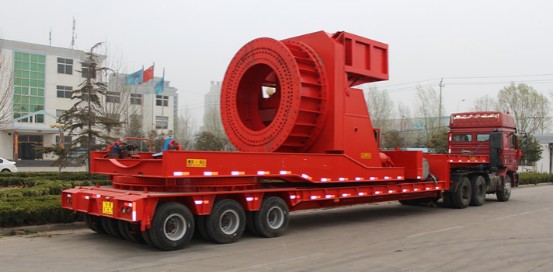
The eighth generation of windmill blade transfer trailer, the fixture main beam adopts gooseneck structure, in the full use of trailer gooseneck space, fixture optimization, transportation 121, less weight, trailer rear bridge exposed, is conducive to reduce the uphill rear wheel heavy serious situation.
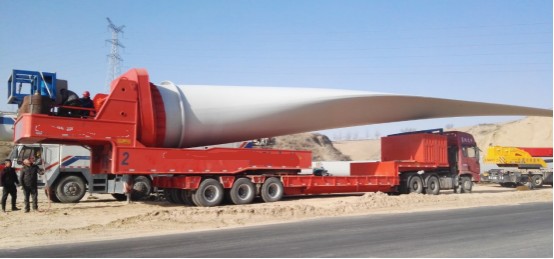
The ninth generation of windmill blade transfer trailer, using 3.4 meters four-axis semi-trailer, 8.25R16 tires, tail end with telescopic hydraulic leg blade for safer u-turn, with lifting adjustment and flat rear wheel steering function, better pass through corners, smaller turning radius.
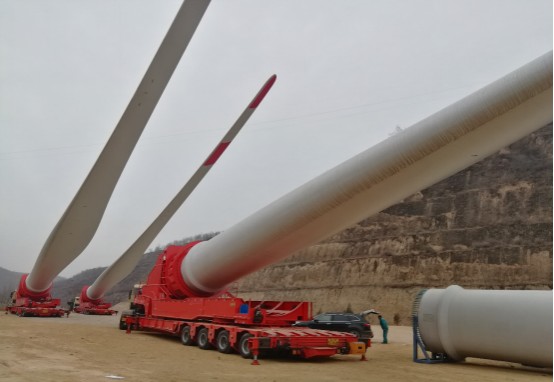
The tenth generation of windmill blade transfer trailer adopts 15m x 3.6m three-line six-axis semi-trailer. The rear wheel with hydraulic leg blade is safer to turn around. The blade flange adopts 50mm steel plate, which shortens the size.
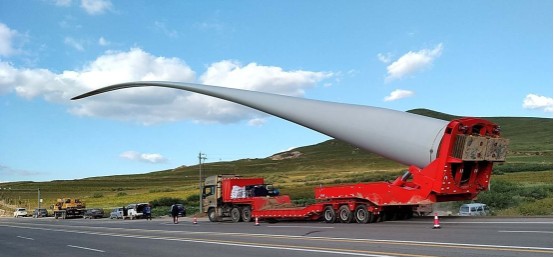
Wind power plant equipment mainly includes wind blade, engine room, wheel hub and tower cylinder, each part belongs to the ordinary road transport over the limit objects, need to use professional vehicles for transportation. And for blade, its length is long, become the main characteristics of different from other wind power plant equipment, but the longer the blade, transport more difficult, and the higher transportation costs, as to the low wind speed, large capacity development, the transportation of wind-power blades is a big problem, blade relative leaf total cost ratio increasing transportation costs, long blade is more and more higher requirements for road transport, How to transport blades safely and economically is a technical problem requiring calculation and planning, which is worth thinking about.
There are many constraints on blade transportation, which are related to blade length, width and height, blade root joint circle size, fulcrum position, weight and center of gravity position, etc. For example, the height limit of blade transportation height on expressway is <5m, and the height of cargo table of blade root support in front of transport trailer is ≥0.9m. Therefore, it is required that the maximum height from the ground under the transport support attitude before and after blade installation should be less than 4m, and the longer the fulcrum position is, the longer the pulling length of the wind blade transport trailer will be, resulting in the larger the turning radius of the road on site. At present, the transport of blades is generally completed by flat wind turbine trailer combined with tractor or special blade transport vehicle with blade lift-rotation-hydraulic steering(rotary wind blade adaptor trailer). Flat semi trailer combined with tractor generally in highway or road flat wind field, transport road conditions must be good.
Rotary wind blade adaptor trailers are specially designed for wind blade transportation on complex road situation. During driving, the blade can be lifted by hydraulic control and rotated 360 degrees to avoid various constraints and obstacles in transportation (mountain slope, trees, houses, Bridges, tunnels, etc.), can reduce the blade based area, significantly reduce road reconstruction of quantities, shorten road transformation period, to a certain extent, meet the turning radius and avoid the mountain cliffs, obstacles such as buildings, utility poles and housing demolition, can also sharply reduce blade transportation vehicle body length, which is widely used, especially in the mountain wind field under the control of the basic is the only limit of road transport radius transportation mode choice, In many wind fields, the blades are first transported from the blade factory to a certain position away from the wind field by the windmill blade trailer in the high-speed section, and then transferred to the machine position by the rotary wind blade adaptor trailer.
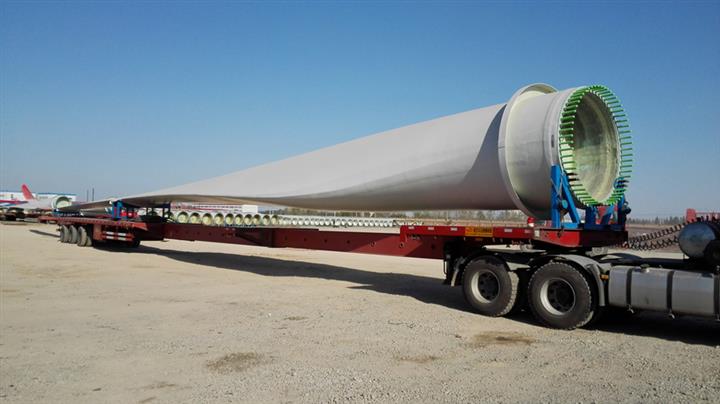
Comparison of the advantages and disadvantages of wind blade lifting trailer and ordinary blade flat semitrailer transportation
Advantages: flexible blade lifting and rotation, less transformation cost. The trailing area of the special blade lifting transportation mode is larger than that of the common flatbed trailer, and the area of the transformation project involved in the curve is reduced by about 10 times. As shown in the figure below, blade lifting transportation can effectively avoid mountains, cliffs and building groups, reduce the cost of road reconstruction and house demolition, damage to vegetation, and greatly improve blade transportation efficiency.
Disadvantages: Due to the limitation of expressways and most grade highways, the wind power plant equipment can only be transported by ordinary flatbed trailer on the national public transportation network. Therefore, when the mountain wind farm adopts special vehicle transportation, it is necessary to select an appropriate place near the wind farm field to set up an intermediate transfer field. In addition, the transportation cost of special lift vehicle is higher than that of ordinary flatbed vehicle.

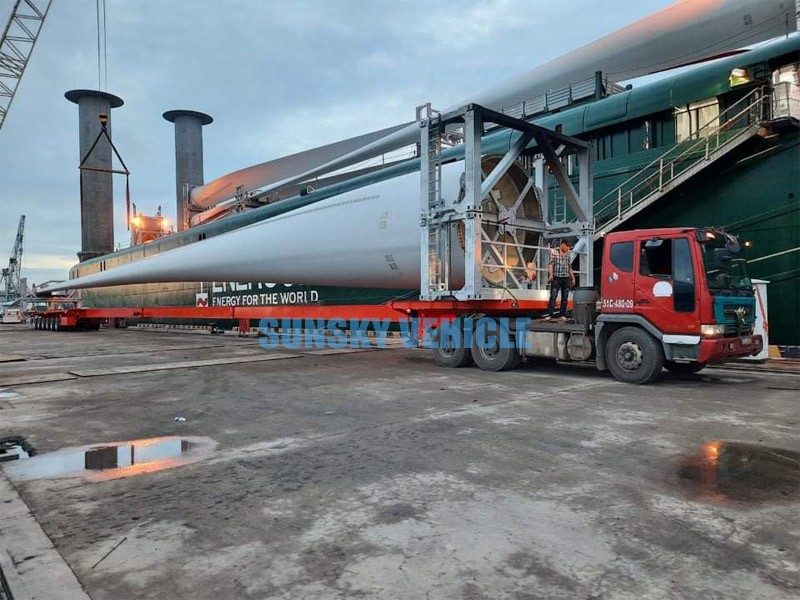

Leave a Comment